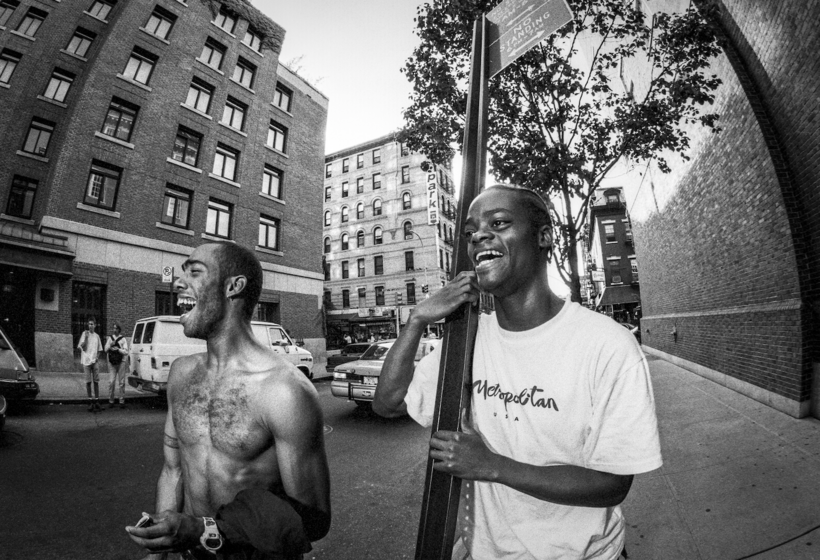I haven’t been into the Supreme store on the corner of Manhattan’s Bowery and Spring streets, and I never visited the old one on Lafayette.
It’s not that James Jebbia’s skateboard and streetwear shop—an almost reductive way of describing the billion-dollar brand that sells everything from boards and clothing to fire extinguishers and dirt bikes—is without allure. Supreme appeals even to a man like me, who has trouble keeping his balance in the shower.
But I’ve avoided it because I can’t bear to wait in line. The interminably replenished queue is why they invented the word “queue”—not just a line, but a serious line. The sort that makes you feel like everyone in the city has more money to burn and more time to kill than you do; that makes you wonder if there was ever a day when people didn’t linger outside en masse, drooling on their Thrasher T-shirts as they await the latest release of goods; that raises the question, What is so special about Supreme, and, for that matter, skateboarding?
I mean, not long ago, skating was seen as an activity for loiterers and punk kids. Now it’s a sport in the Olympics.

Only after watching All the Streets Are Silent, a new documentary from director Jeremy Elkin and his co-producer Dana Brown, did everything begin to make sense. The film unbraids the complicated plait of downtown 90s New York—skateboarding, hip-hop, graffiti, underground clubs, and, yes, Supreme—in a way that’s as invigorating as the very emergence and cross-breeding of those subcultures.
You discern the tribal relationship between—and lasting effects of—groups that for so long have been understood as related, but not actually understood.
Grainy camcorder footage taken by Zoo York co-founder Eli Gesner, who also narrates, shows rambunctious skater kids in filthy jeans partying with Busta Rhymez and other East Coast hip-hop luminaries at Mars, the now dead multi-level nightclub on 13th Street. The archival footage mixes seamlessly with new interviews of everyone from Rosario Dawson to Fab 5 Freddy and Moby.

With the benefit of distance and a careful blending of skate footage, freestyle rapping videos, and near-philosophical soliloquies from the likes of Peter Bici and Kid Capri, All the Streets Are Silent illustrates that skaters and rappers shared an attribute that made them perfect for each other, and also perfect for New York: bravado.
In both worlds, the self-assuredness of cool and the rejection of convention reigned supreme. And though it all took a while to circulate through the cultural bloodstream, the skaters and the rappers eventually outlasted their opponents. As Rosario Dawson says, “Where we are … wouldn’t be that fly if it wasn’t for that skater kid that you’d probably yell at right now.”
The drop-before-you shoppers outside Supreme are doing nothing more than trying to replicate a feeling, the same one this documentary represents so well.
It’s the feeling of kids flippantly grinding on the railings of corporate offices and stealing 40s of Olde English from the bodega on the corner. It’s the feeling of a pack of drug dealers from Staten Island renaming their borough Shaolin and raising themselves out of poverty through the spoken word. Really, it’s the feeling that in a special city, you can create a sport—and a life—out of an activity. If only the activity weren’t shopping, the sport standing in line.
All the Streets are Silent is showing in select theaters. It will stream on Apple TV and Amazon Prime beginning September 7
Nathan King is a Deputy Editor for AIR MAIL

